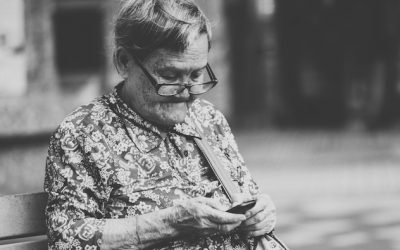
BCONNECT@HOME – “Being Connected” at Home: Making use of digital devices in later life
This project will investigate fundamental changes in the contemporary experience of later life, at the intersection of digital infrastructures, place and the experience of “being connected”. We address a research gap by exploring and theorizing the role of digital communication devices (such as smartphones, tablets, PCs, apps, fitness trackers, pedometers, or “brain games”) in relation to the modern life course. And we combine this theoretical approach with a practical goal of making the research insights actionable through co-design by involving older people and other stakeholders, such as policymakers, ICT researchers and developers, and interest groups in “Academic Work Places” (van Woerkum & Renes, 2010) in The Netherlands, Spain, Sweden and Canada.
The project is contextualized by recent debates around “ageing in place”, loneliness and social isolation (Holt-Lunstad et al., 2010; Wiles et al., 2012), and the idea that these are age-related challenges that require interventions (Mort et al., 2012). The “ageing in place” agenda positions the neighbourhood as the preferred place for older adults to remain independent, active and socially engaged (Wiles et al., 2012). It also stipulates place-based digital interventions as means to prevent and alleviate loneliness and social isolation by stimulating social engagement (Wherton et al., 2015). In the ageing in place agenda, meaningful social connections – the subjective experience of “being connected” – are an essential ingredient for places that support continued health and wellbeing in later life. This includes dimensions related, among others, to playfulness, leisure, activity, and social participation (Nimrod, 2014). Many of the digital technologies currently available or in development from commercial manufacturers and large-scale innovation programs, such as the AAL Programme[1] and H2020 in Europe, strive to support “ageing in place” by stimulating social connectedness and engagement (Wajcman et al., 2008; Nimrod, 2014).
The uptake and “scale” of such digital interventions have remained disappointing. They typically run up against acceptability problems when they meet the muddled realities of everyday life and complex market forces (European Commission, 2016). Their interventionist potential has not been realized because the complexities of human-machine interactions are both under-theorised and over-instrumentalised in technology projects (Peine et al., 2015). Still, with the global rise of digital infrastructures, the use of digital communication devices (smartphones, tablets and PCs, but also fitness trackers, pedometers and other wearables) is pervasive among all age groups (Pew Research Center, 2014; Rosales & Fernández-Ardèvol, 2016a; Loos et al., 2012). Most of the technology projects targeted at older users, so far, have overlooked the everyday use of digital devices by older people as an important context and source for innovation (Prendergast & Garattini, 2015). Finding new solutions, and indeed interventions, to stimulate social engagement and connectivity requires a fine-grained understanding of digital use as an integral element in the contemporary experience of “being connected”. More specifically, it requires: (a) a detailed understanding of existing digital infrastructures and their use in various living arrangements of older people; (b) an understanding of how such knowledge can be translated into better designs; and (c) a richer imagery of older people and their supporting networks as active agents in the digitizing world.
Photo by Joseph Chan on Unsplash
The project has the following objectives:
- Tracing different and similar trends in how older persons use digital communication devices in their home and other locations in four countries, by tracking smartphone and mobile app activity patterns of 600 individuals 55-79 years old (WP I).
- Achieving an understanding of the interconnections between older people, places and digital communication devices, by conducting qualitative studies in homes and neighbourhoods as significant sites for the use and non-use of digital communication devices. Results will be discussed in the Academic Work Places in the other countries (WPs II & III).
- Establishing Academic Work Places in each country, where researchers, older people, ICT designers, and other stakeholders will develop and evaluate co-design methods, informed by the empirically-grounded theoretical insights above (WP IV).
- Advancing theorization of digital ageing and the modern life course, by pulling together the interdisciplinary insights and empirical results as specified in WPs I-IV.
Mireia Fernàndez-Ardèvol (CN&SC – IN3)
Andrea Rosales (CN&SC – IN3)
Funding Body: Ministerio de Economía, Industria y Competitividad
Programme: 3rd Joint Programming Initiative “More Years, Better Lives”: Ageing and place in a digitizing world
Reference: PCIN-2017-080
Start date: 01/04/2018
End date: 01/04/2021
RELATED NEWS
Research Seminar: “Connected at Home: digital technologies and aging”
Los próximos días 10 y 12 de mayo se realizará el seminario de investigación “Conectados en casa: los usos de las tecnologías digitales en la vejez”, en el que se compartirá con la comunidad científica algunos de los resultados del proyecto BCONNECT@HOME
Exploring the digital and built environments of social connectedness in later life
Introduction to the project BCONNECT@HOME at the UOC Research Showcase 2019






